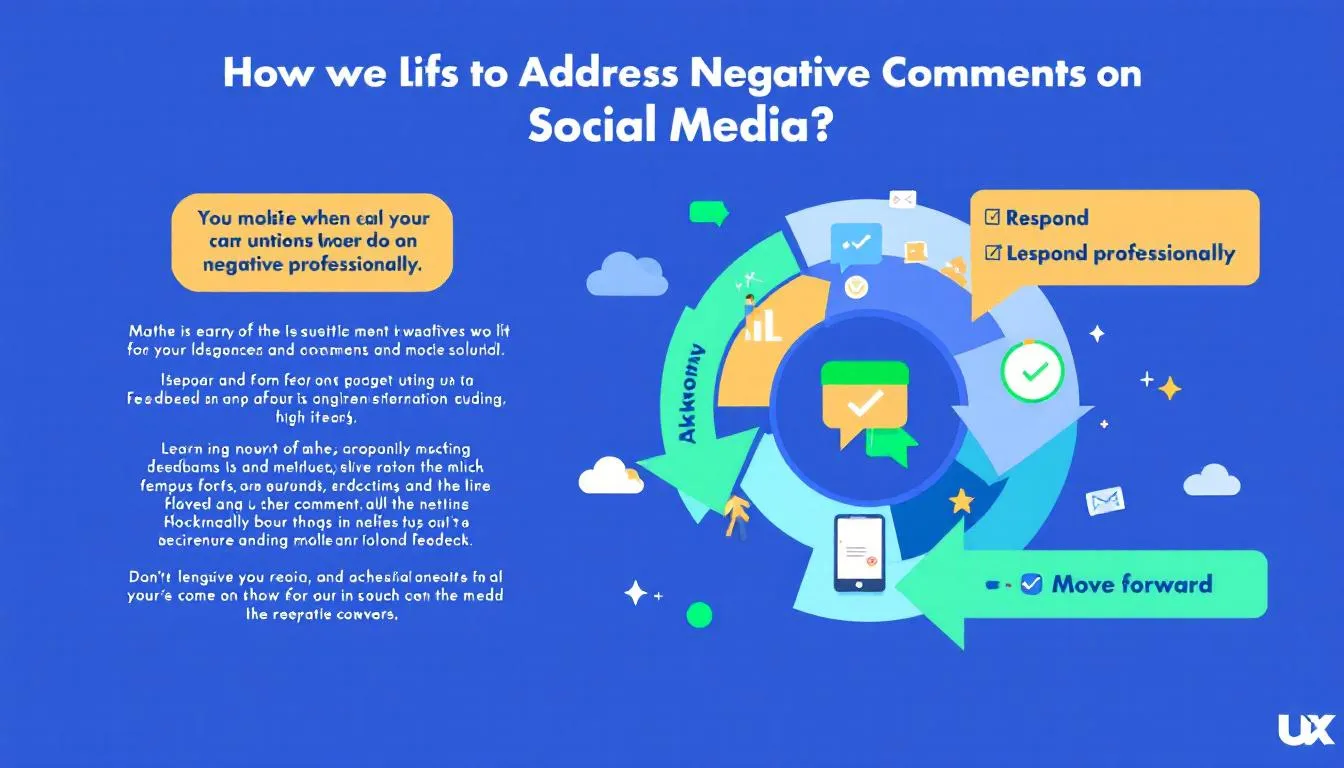
Facing negative comments on social media? Discover how to respond effectively and professionally. This article provides actual examples of social media responses to negative comments and offers practical tips to turn criticism into a valuable opportunity for positive engagement. Learn how to manage your online reputation with real-world examples, expert advice, and industry best practices. Whether you're dealing with a frustrated customer, a troll, or constructive criticism, the right approach can help protect your brand image and even win over critics.
Negative comments on social media can stem from various sources—genuine dissatisfaction, misunderstandings, or even internet trolling. Understanding the intent behind these comments is crucial before crafting your response. Recognizing whether the feedback is constructive or malicious helps you address it appropriately, maintain professionalism, and build stronger relationships with your audience.
Negative comments on social media and review sites come in many forms, and recognizing the type of negative comment is the first step toward an effective response. Common categories include complaints about products or services, dissatisfaction with customer support, and concerns about business practices or policies. Some negative comments are justified, highlighting genuine issues that need to be addressed, while others may be based on misunderstandings or even be unjustified.
Understanding the nature of each negative comment allows businesses to tailor their responses appropriately. For example, a complaint about a faulty product might be best resolved by offering a replacement or refund, while negative feedback about customer support could require an apology and a clear explanation of how the support process is being improved. By categorizing negative comments and responding thoughtfully, businesses can protect and even enhance their online reputation, showing both current and potential customers that they take all feedback seriously.
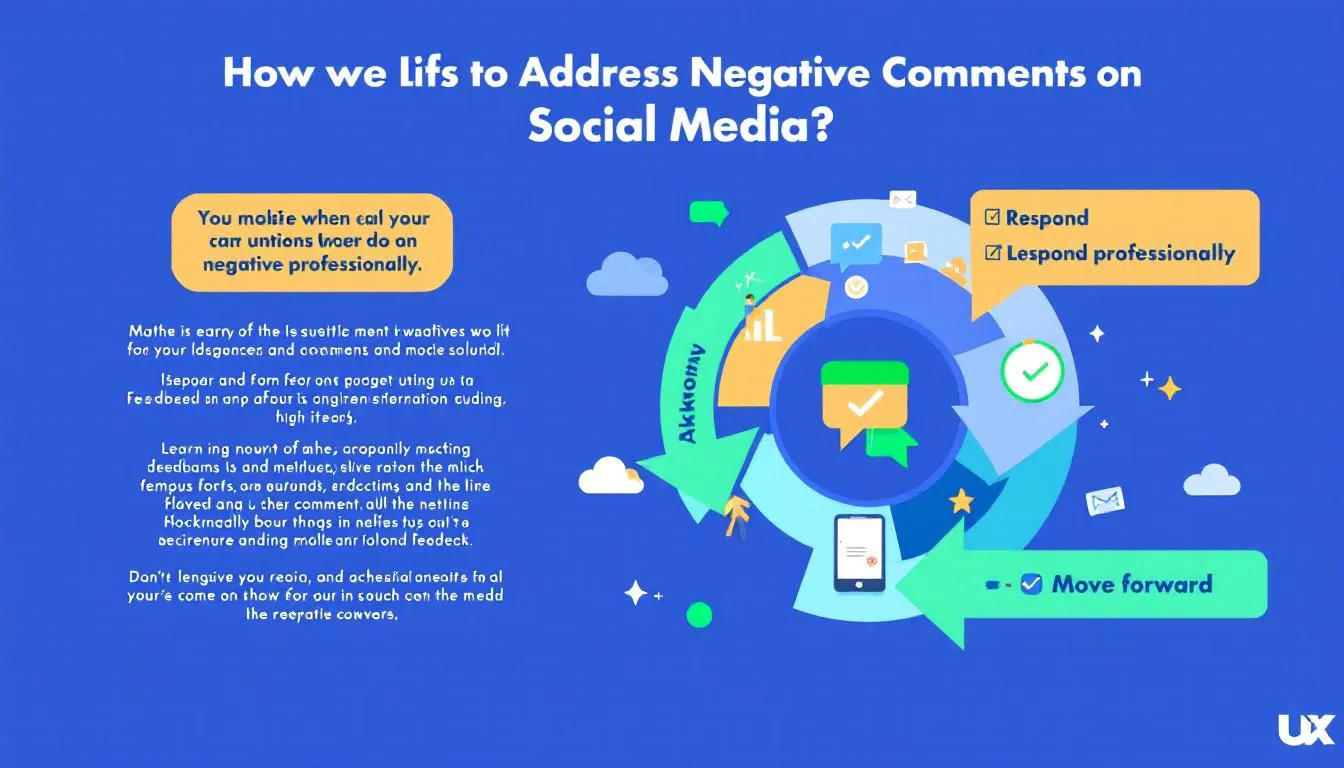
In the realm of online interactions, negative comments are inevitable. However, how a business responds to these comments can significantly impact its reputation. Promptly addressing negative reviews demonstrates that the brand values customer feedback and is committed to resolving issues. Ignoring negative comments can suggest a lack of engagement and care, which can be detrimental to the brand’s image. Addressing negative comments also helps protect and enhance brand reputation by showing the public that the business is proactive in managing feedback.
Negative comments present an opportunity to build trust and demonstrate accountability, beyond just damage control. Thoughtfully addressing customer concerns reflects a business’s commitment to satisfaction and fosters a positive public image. Timely and effective responses can transform dissatisfied customers into loyal advocates, strengthening their bond with the brand through a negative review response and addressing bad comments. Responding to negative comments can also lead to more sales by building trust with potential customers who see the business taking responsibility and valuing feedback.
The power of online reviews cannot be overstated, with a staggering 90% of customers trusting them as much as personal recommendations. Therefore, every negative comment has the potential to influence public perception significantly. Addressing negative feedback head-on allows businesses to mitigate potential damage, demonstrate a serious approach to their reputation, and build a loyal customer base, especially in light of any negative online review. Small businesses, in particular, can benefit from effective response strategies to maintain a positive reputation and attract new customers.
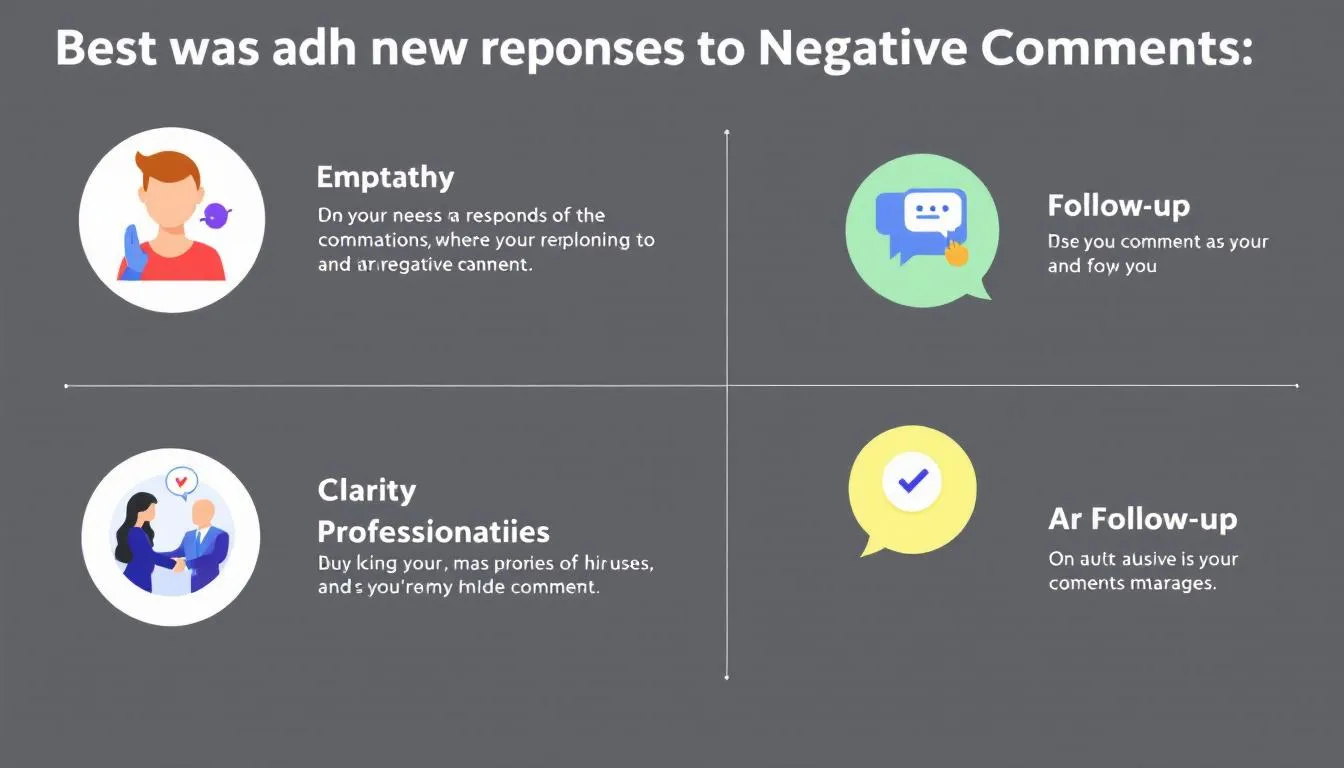
Effectively handling negative comments requires a strategic approach. Responding promptly is the first step. Prompt responses can prevent issues from escalating and demonstrate that the business is attentive and responsive to customer feedback. Brief, professional, and to-the-point responses help maintain a positive brand image. It is also important to maintain a consistent brand voice and ensure the tone is polite when responding to negative comments. Additionally, utilizing negative review response templates can streamline the process of addressing customer concerns.
Personalized responses that address specific concerns make customers feel valued and heard. Taking conversations offline to gather more details can lead to better resolutions and stronger customer relationships. Acknowledging valuable feedback not only helps businesses improve but also shows customers that their input is appreciated.
Following these best practices allows businesses to turn negative feedback into opportunities for growth and improved customer satisfaction.
Personalized responses to negative reviews significantly influence how customers perceive your brand. Using the customer’s name and addressing specific concerns shows that their feedback is taken seriously and demonstrates the business’s dedication to resolving issues. Starting responses with a salutation like 'dear customer' can make the interaction feel more personal and attentive, especially when responding to neutral or negative feedback. Personalized interactions can make customers feel valued and appreciated, even when they have had a negative experience.
AI-driven response tools can also enhance personalization by tailoring responses based on the specifics of the problem at hand. Expressing gratitude for feedback and inviting further discussion shows a commitment to improvement and customer satisfaction.
Personalized responses allow businesses to engage effectively with customers and show they care about their experiences.
Acknowledging the customer’s experience and offering a sincere apology can significantly improve the situation. Effective responses reflect responsibility and high standards by showing care for customer concerns. Key practices include:
This approach shows that opinions are valued and encourages further positive interaction.
A sincere apology can diffuse tension and improve customer relations. Inviting the customer to discuss concerns privately and offering solutions, like discounts, can help rebuild the relationship and show a commitment to making things right.
Following up to ensure satisfaction with the resolution enhances customer loyalty.
Response templates are a valuable resource for businesses looking to manage negative comments efficiently and consistently. These templates provide a structured framework for addressing common types of negative feedback, ensuring that every response is professional, empathetic, and aligned with the brand’s voice. By using response templates, businesses can avoid impulsive or emotional replies, which can sometimes escalate situations.
However, it’s important to remember that while templates offer a starting point, each negative comment should be addressed with a degree of personalization. Customizing templates to reflect the specifics of the customer’s experience demonstrates genuine care and attention. Additionally, response templates can be tailored to suit different industries—such as restaurants, healthcare, or financial services—ensuring that responses are relevant and compliant with industry-specific regulations. Ultimately, well-crafted response templates help businesses respond to negative feedback quickly and effectively, turning challenging situations into opportunities for positive engagement.
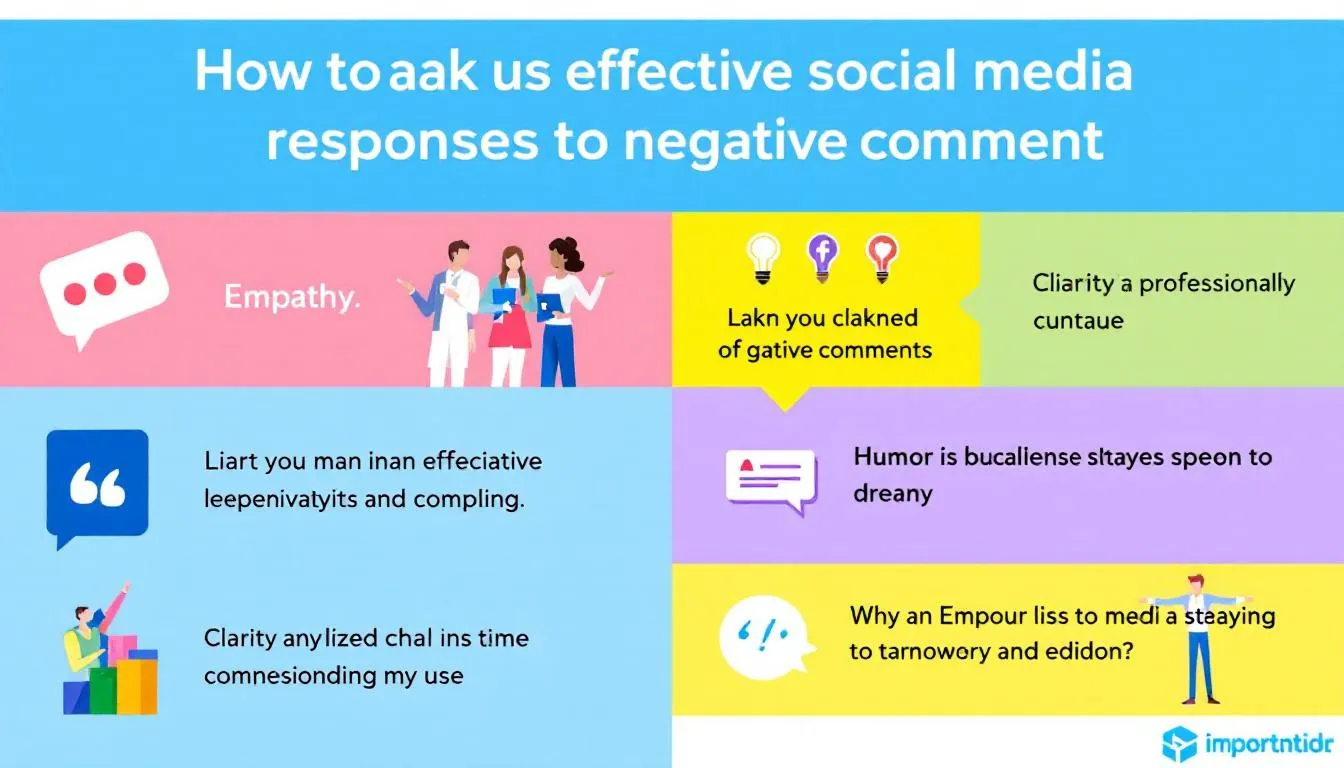
Examples of effective social media responses help businesses understand how to apply best practices in real-life scenarios. Key practices include:
These actions demonstrate a commitment to customer satisfaction.
Here, we explore how businesses can effectively respond to negative comments on Facebook, Instagram, and Twitter. Each platform’s unique dynamics require understanding to manage customer feedback and maintain a positive online reputation effectively.
Quickly recognizing reviews on Facebook is important. Also, thank the customer for their feedback. Responding through the Reviews section or Business Manager helps maintain a professional approach. A business owner can also directly address a negative Facebook review to show personal commitment to resolving the issue and demonstrate that customer concerns are taken seriously. For example, an education center addressing complaints about overpromising and underdelivering could highlight available tutoring options and apologize for any disappointment. Additionally, looking at review response examples can provide valuable insights for crafting an effective review response.
When facing customer complaints about rude staff or poor service, responses should express regret and mention efforts to respond professionally to the upset customer and the support team.
A general manager’s response to a neutral review could include:
These steps help handle negative comments and maintain a positive brand image. It’s important to ignore negative comments.
Instagram’s visual-centric platform offers unique engagement opportunities for businesses. Using visuals in responses to negative comments can enhance engagement and show that customer feedback is valued.
For instance, sharing a photo of an improved product or service can be part of the response to negative feedback. This approach addresses the issue and visually demonstrates the business’s commitment to improvement.
Twitter’s fast-paced nature makes quick responses crucial for managing negative mentions effectively. Acknowledging issues immediately and offering to take the conversation offline promptly shows attentiveness and proactivity in resolving concerns.
Swift attention mitigates the impact of negative mentions and demonstrates a commitment to customer satisfaction.
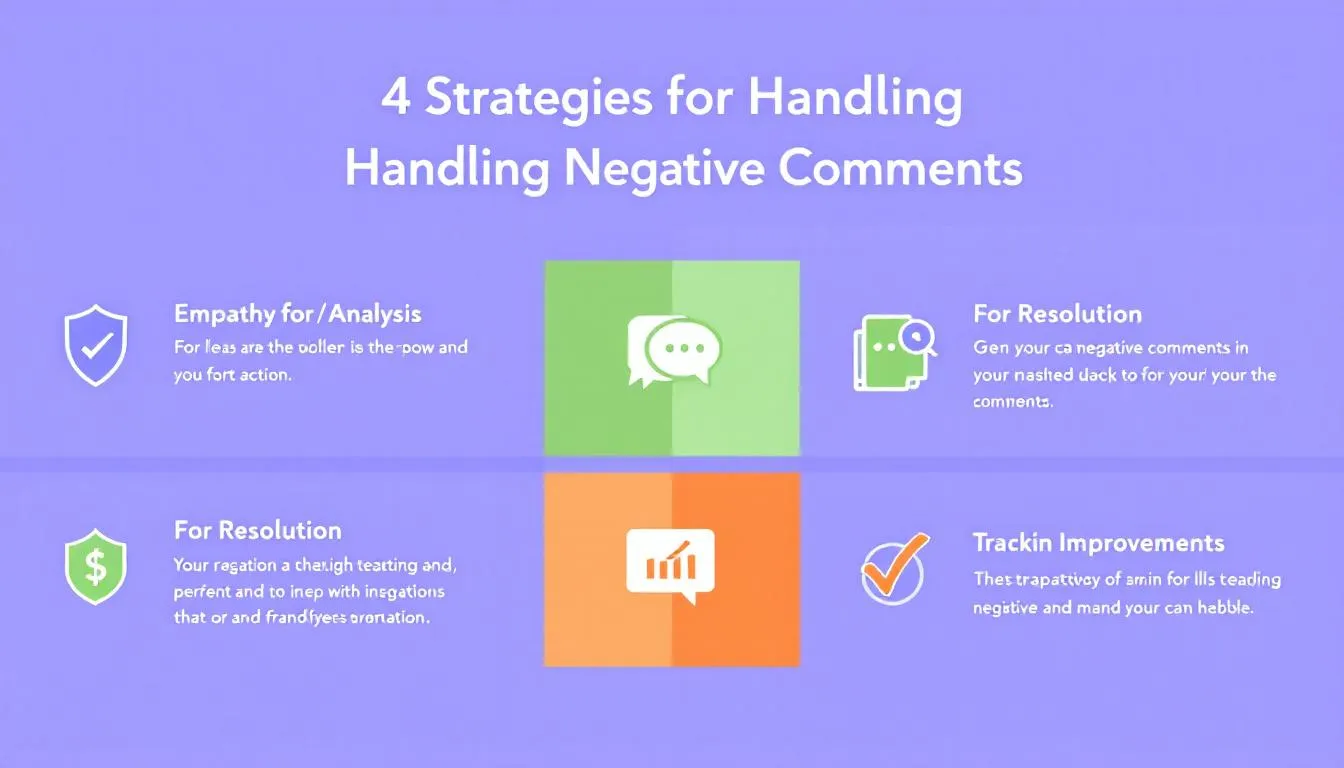
Different industries face unique challenges in responding to negative reviews. Tailored responses that fit each industry’s specific context can significantly improve how effectively businesses address customer feedback. For example, a hospitality business might focus on issues like cleanliness and customer service, while a retail business might deal more with product quality and service issues. Review sites like Google My Business are especially important for local businesses, as they allow these businesses to display contact information, attract customers, and encourage repeat visits.
In this section, we’ll explore industry-specific response examples for the hospitality, retail, and healthcare industries. Understanding common complaints and effective response strategies helps businesses manage their online reputation and improve customer satisfaction.
In the hospitality industry, common complaints include issues like dirty rooms, uncomfortable accommodations, and poor service. Effective responses start with an apology for the disappointment and mention efforts to improve service, such as ensuring fresh produce or enhancing cleanliness.
If a guest complains about rude staff, the response should be:
This approach helps rebuild loyal customers' trust and encourages repeat business.
For example, if a customer mentions a confusing booking process, the response could acknowledge the issue and explain any steps being taken to simplify the process. Thoughtful and proactive responses can turn negative feedback into opportunities for improvement and enhanced customer relations for hospitality businesses.
Retail businesses frequently encounter complaints about defective products and poor service. Quick responses to these concerns are crucial for maintaining customer trust and satisfaction. For example, if a customer leaves a negative review about a defective product, the response should include an apology and an offer to replace the product or provide a refund. Negative review response examples can guide businesses in crafting effective replies.
Engaging with concerned customers by inviting them to share more details privately allows for more effective issue resolution. Handling complaints professionally and demonstrating a commitment to resolving issues helps retail businesses maintain a positive brand image and foster customer loyalty.
Responding to negative feedback in the healthcare industry poses unique challenges, including maintaining patient confidentiality. Common complaints include misdiagnosis, ineffective treatment, and long wait times. Effective responses should acknowledge the patient’s experience and offer general solutions, such as improving wait times or providing additional staff training.
If a patient complains about long wait times, the response might include an apology and an offer to refund associated costs. Addressing concerns thoughtfully while maintaining patient confidentiality can improve satisfaction and trust in healthcare providers.
Responding to negative comments isn’t always straightforward—some situations require advanced strategies and a nuanced approach. In this section, we’ll explore how to handle more complex scenarios, such as dealing with a surge of negative comments, addressing criticism from influential individuals, and leveraging negative feedback as a catalyst for business improvement. Mastering these advanced techniques can help businesses not only manage negative comments but also turn them into opportunities for growth and enhanced customer loyalty.
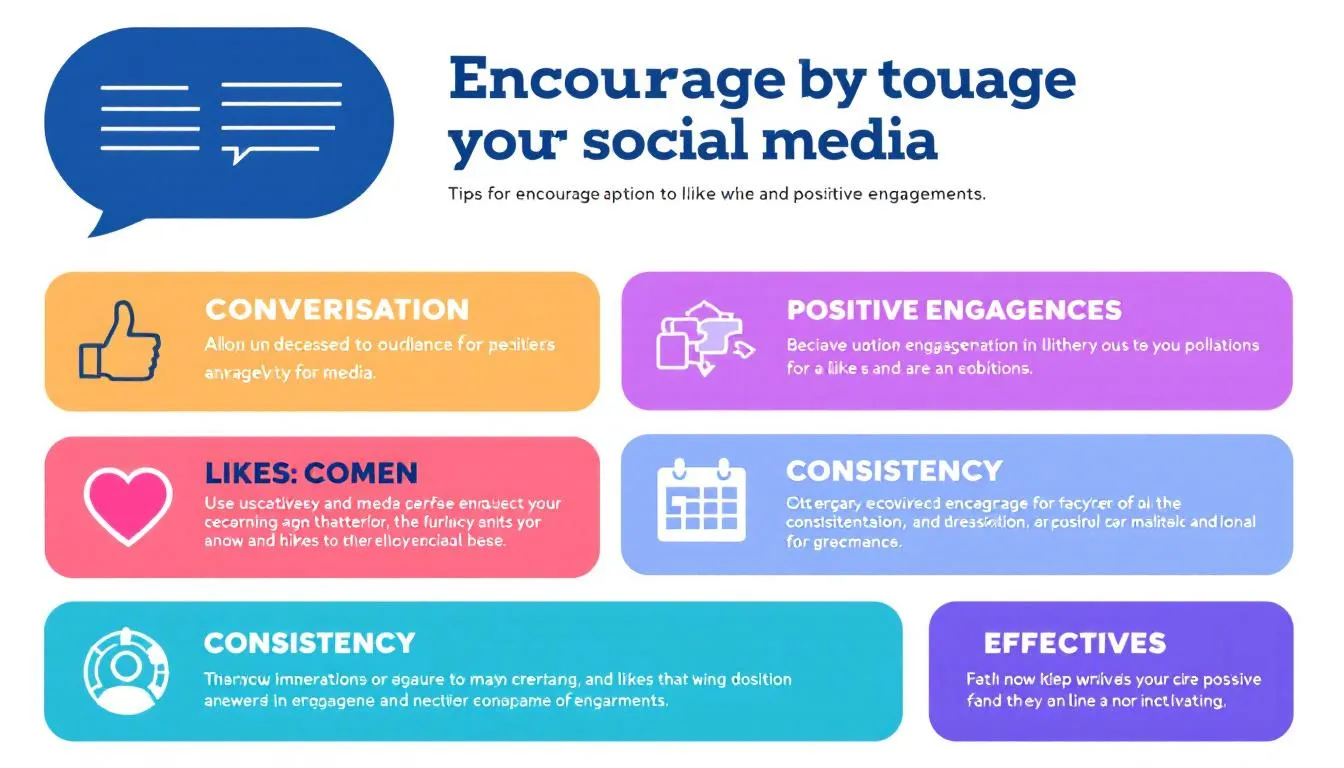
Encouraging positive engagement is crucial for building a strong online reputation. A culture of appreciation within the business can motivate employees to share positive experiences, leading to more customer reviews. Providing detailed responses to complaints helps clarify issues and demonstrates a commitment to improvement.
Here, we explore tips for encouraging positive engagement, like motivating happy customers to share feedback, highlighting positive customer experiences publicly, and using negative feedback for improvement.
Implementing these strategies can foster a positive online presence and enhance customer satisfaction. Actively responding to reviews can have a positive impact on your brand’s reputation and overall financial success.
Encouraging satisfied customers to share positive experiences significantly enhances a brand’s reputation and attracts new customers. Follow-up surveys or incentives can motivate customers to leave positive comments and reviews. It is important to thank customers for their positive review and use it to reinforce customer satisfaction. Offering a discount on future purchases in exchange for a review can effectively encourage customers to gather positive feedback.
Showcasing positive customer feedback on social media builds trust with potential customers and creates a community of brand advocates. Highlighting happy customer experiences demonstrates a commitment to excellent service and encourages others to share their positive experiences too.
Highlighting positive customer experiences enhances a brand’s image and attracts new customers. Encouraging happy customers to share their experiences through reviews and social media posts fosters a positive online presence. Sharing customer testimonials or stories on social media builds trust and creates a sense of community around the brand.
Prominently showcasing positive feedback on social media reinforces trust and motivates other customers to share their experiences. This strategy highlights the brand’s reputation for customer satisfaction and serves as a powerful marketing tool to attract new customers, including positive reviews.
Celebrating a positive experience creates a virtuous cycle of engagement and enhanced customer experience.
Negative feedback, though challenging, provides invaluable insights for businesses looking to improve their offerings. Constructive feedback guides businesses in making necessary adjustments to services or products, enhancing overall customer satisfaction and loyalty. Analyzing positive and negative reviews helps identify trends or recurring issues that need addressing, including any negative response from customers, negative customer reviews, negative opinions, as well as negative customer feedback. Businesses should pay close attention to every negative opinion to identify areas for improvement.
Addressing issues raised in negative feedback shows customers their opinions are valued and demonstrates the business’s commitment to continuous improvement. Responding promptly and empathetically to an unhappy customer can help restore trust and protect your brand reputation. Strategies for turning unhappy customers into loyal ones include personalized and empathetic communication that addresses their concerns directly. Leveraging negative comments as opportunities for growth turns potential setbacks into stepping stones for success. This proactive approach can enhance the customer experience and build a stronger, more resilient brand. Businesses should also respond to negative reviews to further strengthen their relationship with customers. Recognizing and addressing each customer's experience is essential to demonstrate empathy and a commitment to service quality.
Managing social media comments effectively requires the right tools and resources. Social media management tools like Hootsuite and Buffer enable businesses to schedule posts, monitor engagement, and streamline responses to comments. These tools can help maintain a consistent online presence and ensure that customer feedback is addressed promptly and professionally.
Review management platforms such as ReviewTrackers and NiceJob help businesses manage online reviews and feedback effectively. Additionally, AI-powered response tools can generate personalized responses to customer comments, ensuring timely and relevant engagement.
By utilizing these tools, businesses can enhance their reputation management efforts and maintain positive customer relationships.
Social media management tools like Hootsuite offer several benefits:
For example, businesses can use Hootsuite to schedule posts in advance, ensuring a consistent online presence even during busy periods.
Buffer offers analytics features that help businesses understand the performance of their posts and optimize their content strategy. By analyzing engagement metrics, businesses can identify which types of content resonate most with their audience and make data-driven decisions to enhance their social media efforts.
Utilizing these tools can streamline social media management and improve customer engagement.
Review management platforms streamline the process of managing customer feedback and reviews across multiple online channels. Platforms such as ReviewTrackers enable businesses to centralize their review responses and monitor feedback from various sites, making it easier to respond promptly and effectively. Managing Yelp reviews is especially important, as engaging with customer feedback on Yelp plays a crucial role in reputation management and can significantly influence customer perception. This centralized approach can improve customer engagement and help businesses maintain a positive online reputation.
NiceJob offers a free 14-day trial to help businesses experience the benefits of their review management services. By using these platforms, businesses can ensure that they are consistently addressing customer feedback and leveraging reviews to enhance their offerings on their review site, all while promoting their company name.
Effective review management can lead to a stronger online reputation and increased customer trust through online reviews, Google reviews, and bad reviews, as well as a Google search for feedback.
AI-powered response tools utilize advanced algorithms to analyze customer comments and generate tailored replies, enhancing responsiveness on social media. These tools can streamline the process of crafting personalized responses, ensuring that businesses address specific customer concerns efficiently. For example, AI tools can use sentiment analysis to gauge the tone of customer feedback and generate appropriate responses.
By implementing AI-powered response tools, businesses can ensure that their social media interactions are timely and relevant, improving overall customer engagement. These tools can also help businesses manage a high volume of comments more effectively, allowing them to focus on other important aspects of their operations.
In conclusion, responding to negative comments on social media is an essential aspect of reputation management. By addressing negative feedback promptly and professionally, businesses can mitigate potential damage, build customer trust, and turn dissatisfied customers into loyal advocates. Adopting best practices such as staying calm, personalizing responses, and acknowledging and apologizing for customer concerns can make a significant difference in how effectively businesses manage negative comments.
Utilizing tools and resources like social media management platforms, review management systems, and AI-powered response tools can streamline the process and enhance overall customer engagement. By encouraging positive feedback and using negative feedback for continuous improvement, businesses can create a strong online presence and foster long-term customer relationships. Embracing these strategies will not only protect but also enhance your brand’s reputation in the digital age.
Responding to negative comments is vital for safeguarding your brand's reputation and fostering customer trust, as it shows your commitment to addressing concerns and enhancing customer satisfaction.
To stay calm and professional when responding to negative comments, avoid defensive language and maintain a polite tone while approaching each comment with empathy. This demonstrates that you value the customer's feedback and are committed to resolving their concerns.
To effectively personalize responses to negative reviews, use the customer's name, address their specific concerns directly, and express gratitude for their feedback. This approach demonstrates that you value their opinions and are committed to resolving their issues.
Businesses can leverage negative feedback by analyzing it for common trends, allowing them to make necessary adjustments and showcase their dedication to continuous improvement. This proactive approach not only enhances their services but also builds customer trust.
Using tools like Hootsuite, Buffer, and AI-powered response tools can greatly enhance your ability to manage social media comments by allowing you to schedule posts, monitor engagement, and automate personalized responses efficiently.
Learn how to enhance your online presence, gather more positive reviews, and prevent negative feedback.




Why waste time managing reviews manually? Let ReviewCrusher AI do the heavy lifting for you!
With our AI-powered tool, you can boost your reputation, attract more customers, and grow your business—effortlessly. We automate the tasks that matter most, so you can focus on what you do best.
🚀 More trust. More sales. Less hassle.
This is your chance to see how ReviewCrusher AI can transform your online presence and deliver real results.
Ready to take your business to the next level?
Click below to sign up now and start crushing your goals today! 💪